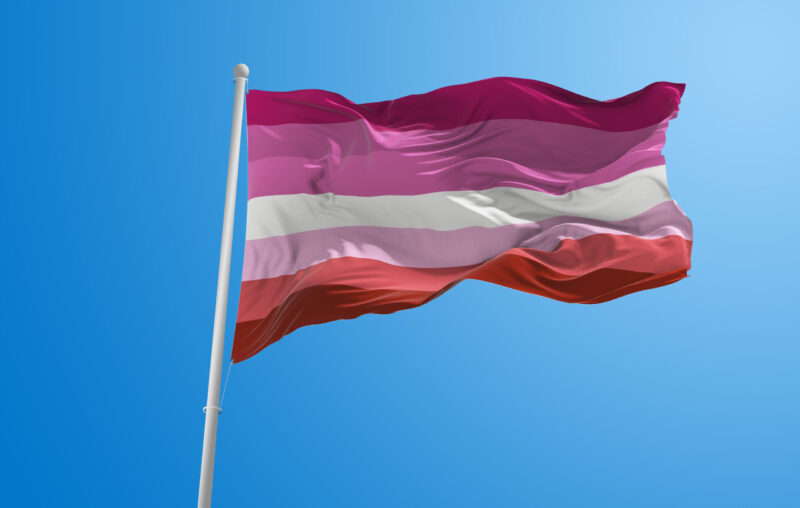The lesbian flag is an important emblem for identity and visibility. It represents community pride while sparking meaningful discussions about diversity and belonging. As with other LGBTQ+ symbols, it carries historical roots and modern interpretations. This article examines its background and cultural role, while also connecting it to larger conversations about acceptance, inclusivity, and symbolism in society. Readers will find insights not just on design and history but also on parallels in art, identity, and the human experience.
Understanding Symbolism In Color And Design
Colors often convey emotion, history, and cultural meaning. Throughout civilizations, flags and symbols have relied on specific hues to communicate values. For example, red has represented passion or struggle in different contexts. In the same way, identity-based flags employ shades that echo shared experiences. Each element of a design is chosen with care to highlight community values. The lesbian flag uses this approach to combine personal identity with collective pride, ensuring the visual message resonates with both insiders and allies.
How Community Symbols Strengthen Belonging
Humans naturally create signs and emblems to express unity. Whether through banners, jewelry, or tattoos, symbols help people feel part of something larger. In LGBTQ+ spaces, a shared image builds a sense of comfort and solidarity. Seeing familiar designs at gatherings assures individuals that they are not alone. When one recognizes the lesbian flag displayed in a public space, it signals inclusivity and understanding. That recognition goes beyond aesthetics, offering reassurance that identity is both acknowledged and celebrated.
Historical Roots Of Pride Banners
The use of flags to communicate political or social messages has a long history. From medieval standards on battlefields to banners raised during revolutions, people have always looked to visuals to assert their values. The rise of pride flags followed the same pattern. Activists realized that symbols could unify diverse groups under a single image. The creation of distinct flags allowed for both collective LGBTQ+ identity and the celebration of individual communities. The lesbian flag emerged as part of this cultural shift, ensuring visibility within the broader movement.
Identity Expression Through Art And Culture
Art has always been a powerful outlet for marginalized voices. From literature to painting, creative mediums allow for nuanced exploration of identity. For LGBTQ+ communities, visual art carries additional significance because it offers representation where mainstream platforms may not. The lesbian flag is more than just stripes on fabric; it is a piece of cultural art. Its presence in murals, digital illustrations, and fashion highlights how identity can be integrated into everyday aesthetics, blending personal style with political visibility.
Challenges In Achieving Representation
Representation is never simple, especially within diverse communities. Different groups often debate the best way to symbolize shared experiences. For some, one design cannot capture the full spectrum of identity. These debates sometimes generate multiple variations of flags, each aiming to include broader perspectives. The lesbian flag itself has gone through different iterations, reflecting discussions within the community about inclusivity, symbolism, and recognition. These conversations reveal both the challenges and the progress in building identity symbols that respect diversity.
How Visibility Shapes Social Change
Visibility plays a critical role in driving social acceptance. When marginalized identities are hidden, stereotypes and misinformation thrive. However, public symbols create opportunities for dialogue. A flag, when displayed in schools, workplaces, or public gatherings, normalizes identities that once faced erasure. The lesbian flag contributes to this shift by appearing not only in parades but also in media, art, and personal expression. Visibility does not solve every challenge, but it lays the foundation for greater empathy and legal protections.
Cultural Symbols Across The World
Different cultures have relied on symbols to represent identity and values. Indigenous groups often used intricate patterns on clothing or carvings to highlight belonging. Nations build flags that capture landscapes, myths, or struggles for independence. Religious traditions create emblems that embody spiritual belief. Examining these practices highlights a universal human need for identity markers. In this global context, LGBTQ+ pride flags are not unusual; they continue a legacy of visual storytelling that connects people across centuries and geographies.
Language Identity And Shared Narratives
While visuals are powerful, language also plays a key role in identity formation. Stories, songs, and poetry transmit cultural memory. Communities use narratives to keep traditions alive and to pass wisdom across generations. For LGBTQ+ individuals, storytelling creates a sense of validation and resilience. When combined with symbols like the lesbian flag, language helps build multi-layered identities. Words and images together preserve history, ensuring that community members see themselves represented in both visual and verbal traditions.
Modern Adaptations In Digital Spaces
The digital age has transformed how identity symbols spread. Social media platforms allow flags to circulate instantly across the globe. Young people in different countries can encounter community images and adopt them for self-expression. The lesbian flag appears in avatars, emojis, stickers, and online art. This digital visibility expands its role beyond physical parades into virtual spaces where identity is discussed, challenged, and celebrated. Digital adaptation ensures the flag continues to evolve with cultural shifts while maintaining its core meaning.
Future Conversations About Inclusivity
The future of identity symbols remains open to reinterpretation. Communities may revise existing flags or introduce new ones as awareness grows. Inclusivity will likely remain at the center of these discussions. Younger generations are already shaping how identity is expressed, blending traditional pride colors with innovative designs. The lesbian flag will continue to spark conversations about recognition, visibility, and diversity. As long as people seek representation, the evolution of symbols will reflect ongoing struggles and triumphs in the quest for equality.
